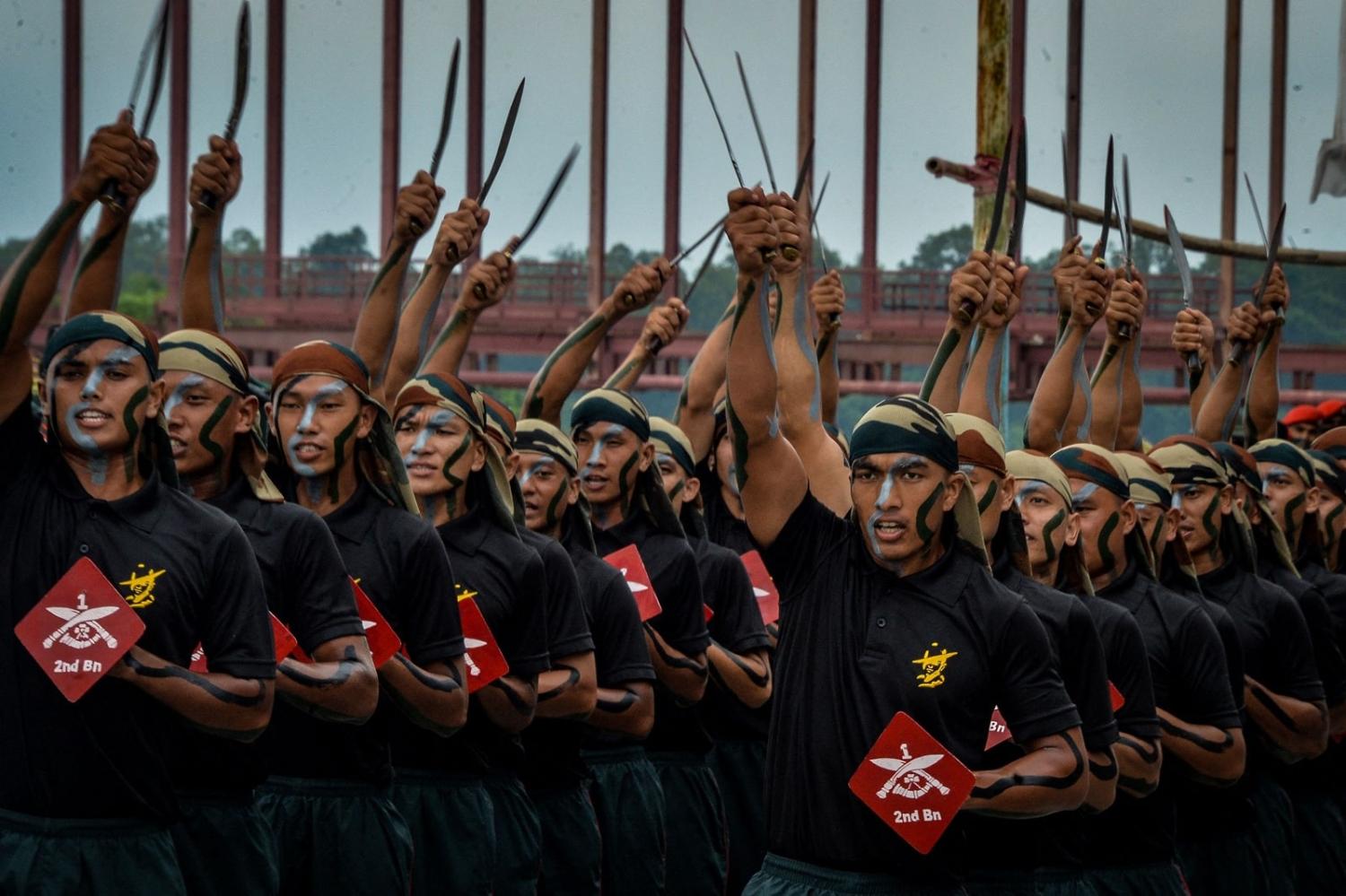The Maoist guerrilla fighter turned politician, Nepal’s Prime Minister Pushpa Kamal Dahal, visited India this month. Relations between the neighbours have reached an all-time low in recent times, and one of the big issues dominating the trip was the historical recruitment of Nepalese Gorkha soldiers into the Indian Army. Prachanda, as Nepal’s PM is commonly known, raised concerns about the scheme with India’s Prime Minister Narendra Modi.
Nepalese Gorkhas are fighters renowned for their valour and war skills and have served in the Indian Army since independence in 1947, having previously been recruited for the British Indian Army in colonial times. In 2022, India launched the Agnipath Scheme, a controversial limited-period service arrangement in which new recruits known as Agniveers will serve for a four-year term in the Indian Armed Forces, after which only 25 per cent of Agniveers will be retained “based on merit and organisational requirements”. The same rules will apply to the recruitment of new Nepalese Gorkha recruits.
Nepalese Gorkhas have served in the Indian Army under the Tripartite Agreement or the Gorkha Troops (Agreement) since it was signed in December 1947 – a deal in which India, Britain and Nepal agree to “the continued employment of (Nepalese) Gurkha (Gorkha) officers and soldiers in the Armies of the United Kingdom and India”. After India won its independence, Nepal agreed to continue the practice of sending Gorkhas to serve in the British and Indian armies.
The practice of recruiting Gorkhas into the Indian Army was also a focus of the country’s first prime minister, Jawaharlal Nehru, to forge deeper security ties with Nepal, which have stood the test of time. Until now. Currently, 40,000 Gorkha soldiers serve in the Indian Army, with Nepalese Gorkhas comprising around 60 per cent.
A large community of ex-servicemen and their dependents receive a pension from India. In 2016–17, the most recent published figures, India disbursed an estimated 4.5 billion Nepali Rupees (AU$50 million) to pension holders living in Nepal. In addition to the monetary benefits, the Gorkha soldiers and ex-servicemen enjoy social and medical security benefits on par with their Indian counterparts.

However, under the Agnipath Scheme, the recruits will not have the option of a pension. Previously, recruits in the Indian Army could serve a minimum of ten years and receive a pension.
No pension and a limited-service period under the Agnipath Scheme will directly affect the Nepalese economy as remittances from the salaries and pensions of the serving and retired service members make a significant contribution to the Nepalese GDP. Nepal’s concern is not only on the economic front but for the disheartening influence on young aspirants. Serving in the Indian Army is considered a well-paying job with salaries said to be 2.5 times higher than in the Nepalese Army. But with a limited period of service, would-be recruits will have to seek opportunities elsewhere.
The recruitment drive for Gorkhas by the Indian Army has been on hold for the last three years, affected first by the Covid-19 pandemic, and now by uncertainty due to the Agnipath Scheme.
Prachanda reportedly conveyed to Modi reservations about recruitment, citing the Tripartite Agreement. Nepal wishes to be a party to any changes in the recruitment process, but since Nepalese Gorkhas are recruited under India’s general rules and on a voluntary basis, there is little space for bilateral consultations. Yet given Gorkhas have been a pillar of the Indian Army, India would not wish to close the door on negotiations.
The delay in finding common ground has Nepal worried. Prachanda was expected to take back a firm commitment on recruitment amid immense public pressure at home. But the issue did not appear in the joint press statements following the meetings between Modi, Prachanda and India’s National Security Advisor Ajit Doval.
The broader relationship between Nepal and India has also soured in recent years. Nepal has accused India of interfering in its constitution-making process, imposing a border blockade, and causing disputes on its western boundary with India that have resulted in anti-India movements in Nepal.
A section of politics in Nepal, especially ultra-nationalists such as the Communist Party of Nepal (UML), has called for defence ties with China to create parity. While such a scenario is unlikely and may dent the bilateral ties with India, the Nepalese army held joint military exercises with China’s People’s Liberation Army for the first time in 2017, and are reportedly resuming exercises after being interrupted by Covid.
Considering Nepal’s geostrategic location between India and China, a delay in resolving the Gorkha recruitment issue will tarnish India’s goodwill in Nepal.

